Data Fusion for Plant Disease Detection
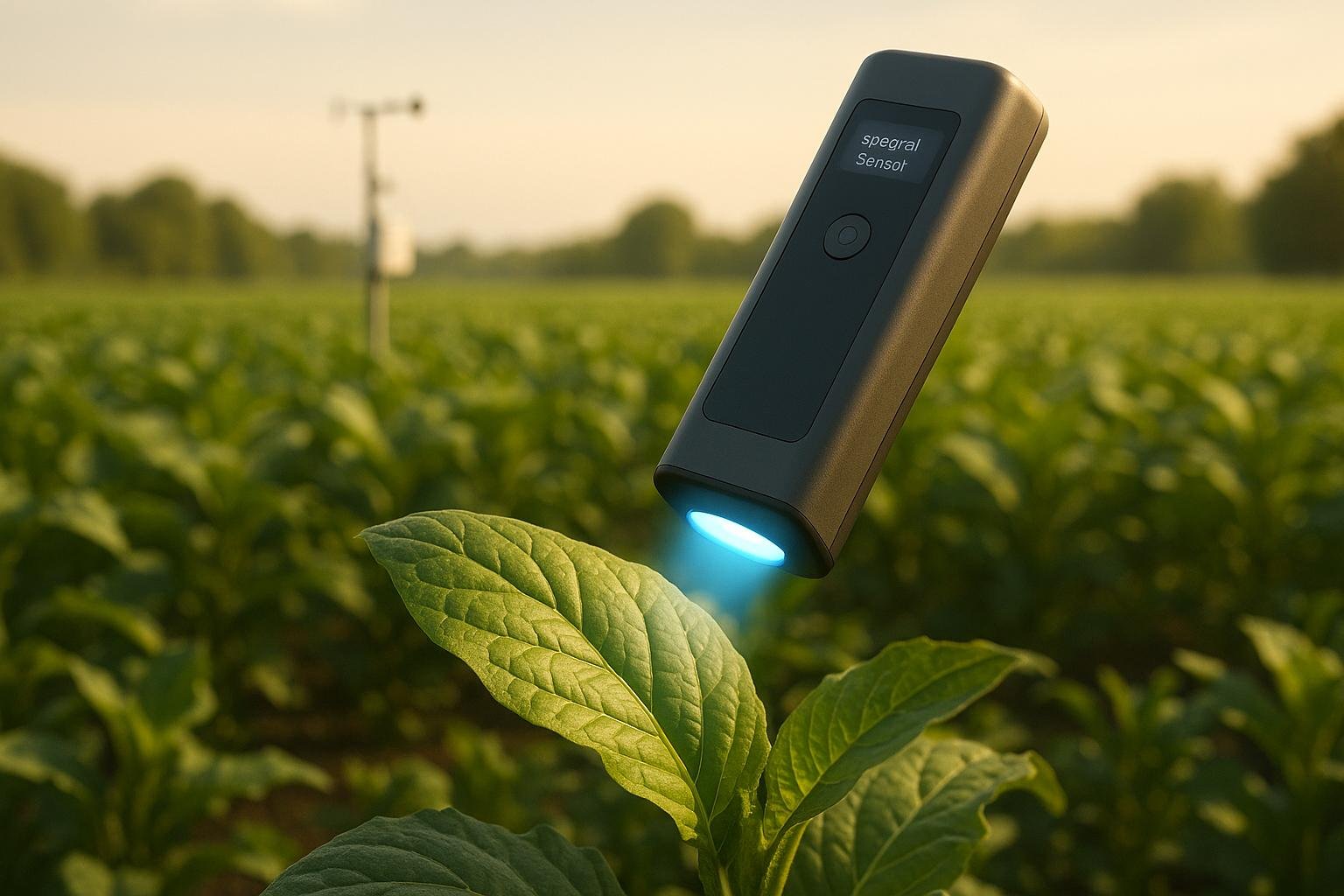
Key Takeaways:
- What is Data Fusion? Merging data from sensors like hyperspectral cameras, soil moisture detectors, and weather instruments to detect plant diseases.
- Why Combine Data? Spectral imaging spots plant stress, while environmental factors (humidity, temperature) provide context for accurate diagnosis.
- Benefits: Automated disease detection, real-time alerts, fewer false positives, and better differentiation between issues like pests and nutrient deficiencies.
- Techniques Used: Deep learning, transfer learning, and attention mechanisms process and prioritize data for better results.
- Applications: Used in crops like wheat, tomatoes, and corn, as well as smart gardening tools like AIGardenPlanner.
Data fusion bridges gaps in traditional methods, making plant health monitoring smarter and more accessible.
Detecting Plant Diseases Earlier Using Hyperspectral Imaging

Main Data Fusion Methods in Plant Disease Detection
When it comes to plant disease detection, combining diverse data sources is key. Three standout methods - deep learning, transfer learning, and attention mechanisms - are at the heart of this integration process.
Deep Learning for Data Integration
Deep learning models are like detectives for plant health, capable of uncovering patterns across multiple data sources. These models can analyze everything from spectral images to temperature and soil moisture readings, offering a well-rounded view of plant conditions.
At the core of this approach are Convolutional Neural Networks (CNNs). These networks excel at linking specific spectral signatures to environmental conditions that encourage disease development. They can even spot connections between data points that might escape human observation.
Taking it a step further, multi-modal architectures allow deep learning models to process different types of data simultaneously. For instance, one part of the system might analyze hyperspectral images, another might handle sensor data, and yet another could focus on weather history. The results from these branches are combined in the final layers to make accurate predictions about plant diseases.
That said, deep learning has its challenges. It demands a lot of training data and computational power. Plus, these models often work like "black boxes", making it hard to understand how they arrive at their conclusions. To address these hurdles, transfer learning offers a practical alternative by building on pre-existing models.
Transfer Learning for Different Data Types
Transfer learning helps overcome the data and resource demands of deep learning by reusing models trained for one purpose and adapting them for another. This approach is particularly useful when dealing with different types of data or plant species.
For example, pre-trained image models can be fine-tuned for spectral analysis. A model initially trained on standard photographs can be adapted to work with hyperspectral or thermal images, cutting down the need for large, disease-specific datasets.
Domain adaptation is another valuable tool. A model developed for identifying diseases in tomatoes can be adjusted to work with peppers, leveraging similarities in how diseases manifest in related plants. This is a game-changer for growers managing a variety of crops.
Additionally, cross-sensor transfer learning allows models to work with different equipment. A system trained on high-end hyperspectral cameras can be adapted for use with more affordable multispectral sensors, making advanced diagnostics accessible to more users.
While transfer learning is efficient, it’s not without its limits. Models trained in controlled environments, like greenhouses, can struggle when applied to outdoor settings with unpredictable lighting and weather. This is where attention mechanisms come into play, helping refine how data is prioritized.
Attention Mechanisms in Data Fusion
Attention mechanisms are all about focus - helping systems zero in on the most critical information for disease detection. Instead of treating all data equally, these mechanisms highlight the most relevant spectral bands, environmental readings, or image areas.
For instance, spatial attention homes in on specific parts of plant images, such as areas with unusual discoloration or textures. Spectral attention identifies which wavelengths are most diagnostic for a given disease. Meanwhile, temporal attention focuses on time-sensitive data, like early-morning humidity levels that might signal fungal growth.
Even more advanced is multi-modal attention, which coordinates across multiple data sources. For example, the system might prioritize environmental data in the early stages of disease development and shift to spectral data as symptoms become more visible.
What sets attention mechanisms apart is their transparency. Unlike deep learning models, they can show exactly which data points influenced their decisions. However, designing these systems is no small feat - poorly implemented attention mechanisms can end up emphasizing irrelevant information or overlooking key details.
The Power of Combining Methods
The real magic happens when these methods are used together. A modern plant disease detection system might start with transfer learning to adapt pre-trained models, use attention mechanisms to focus on the most important features, and rely on deep learning to integrate data from multiple sources. By combining their strengths, these approaches deliver faster, more accurate disease diagnoses, helping growers protect their crops more effectively.
Combining Spectral and Environmental Data
Integrating spectral and environmental data takes disease detection to a new level. By combining advanced imaging techniques with environmental insights, researchers can create a more complete picture of plant health. Below, we’ll explore the types of spectral data used and the environmental factors that play a critical role in improving disease diagnosis.
Types of Spectral Data
Spectral imaging is a powerful tool for detecting early signs of stress and disease in plants. Each method offers distinct advantages:
- RGB imaging captures visible changes in plant color and lesions using red, green, and blue wavelengths. Its affordability and accessibility make it ideal for initial screenings, though it may miss early, non-visible symptoms.
- Multispectral imaging goes beyond visible light, capturing select wavelength bands, including near-infrared. This makes it especially useful for detecting changes in chlorophyll levels and water content - key indicators of plant stress. Healthy plants reflect near-infrared light well, while diseased tissues show reduced reflectance.
- Hyperspectral imaging provides a deeper level of analysis by capturing data across a wide range of narrow wavelength bands. This method can identify specific diseases by detecting subtle biochemical changes, often before any visible symptoms appear.
Environmental Data in Disease Detection
Environmental conditions significantly impact plant health and the spread of disease. Incorporating this data alongside spectral imaging provides critical context for more accurate diagnoses.
- Temperature and humidity are key factors in disease development. Many fungal infections thrive under specific temperature and humidity conditions. Tracking these variables alongside spectral changes can help predict potential outbreaks.
- Soil moisture levels influence both plant stress and pathogen activity. Excess moisture can lead to root diseases, while drought weakens plant defenses. Soil moisture sensors offer valuable context for interpreting spectral data.
- Leaf wetness duration is crucial for foliar diseases, as many fungal spores need surface moisture to germinate. Combining this data with spectral markers can help optimize the timing of preventive measures.
- Wind speed and direction affect how airborne pathogens spread. Pairing spectral infection maps with wind data can identify high-risk areas.
- Light intensity and photoperiod influence both plant immunity and pathogen behavior. Measuring light conditions can help differentiate between stress-related changes and disease symptoms.
By layering these environmental insights with spectral data, researchers can gain a more nuanced understanding of plant health.
Impact on Diagnosis Accuracy
The fusion of spectral and environmental data significantly improves the accuracy and reliability of disease detection. When spectral indicators align with environmental conditions that favor disease development, false positives are reduced, and diagnoses become more precise.
This approach also enhances the ability to assess disease severity and progression. Tracking environmental trends alongside baseline spectral measurements provides early warnings, often before visible symptoms appear. Spatial data from environmental sensors can even highlight microclimates that are more susceptible to disease, allowing for targeted interventions. Together, these tools create a more robust system for monitoring and managing plant health.
🚀 Ready to Reinvent Your Garden?
Join thousands of homeowners who have transformed their gardens using our AI design tool. Upload one photo to explore endless possibilities.
Get your AI garden designs →Applications and Case Studies
The real-world use of data fusion techniques has moved well beyond the confines of research labs, proving their value in agriculture and smart gardening. By combining spectral data from imaging technologies with environmental measurements, researchers have created systems that enable earlier detection of plant diseases. These advancements are helping growers protect their crops and maintain healthier gardens.
Crop-Specific Case Studies
Studies highlight how data fusion is transforming disease detection in specific crops:
- Wheat: Pairing hyperspectral imaging with weather data has shown improved early detection of fungal diseases.
- Tomatoes: Multispectral aerial imagery combined with soil and weather data enhances monitoring for diseases.
- Fruit Orchards: Thermal imaging integrated with environmental sensors aids in identifying potential issues.
- Corn: RGB imaging, when paired with microclimate data, supports better disease management.
These examples demonstrate how data fusion can deliver faster and more precise disease monitoring across various agricultural contexts.
Performance Metrics Comparison
Compared to single-sensor systems, data fusion consistently delivers better results. It improves detection accuracy and speeds up the process, allowing for earlier interventions that can significantly reduce crop losses. Researchers are now focusing on balancing sensor costs with benefits as these methods expand into larger field trials.
Applications in Smart Gardening
The same advancements are reshaping smart gardening, integrating data fusion into everyday gardening practices. Current smart gardening systems utilize these techniques for automated plant health monitoring:
- Greenhouses: Systems combine drone or smartphone imaging with environmental sensors to provide continuous condition assessments.
- Garden Management Platforms: These tools merge local weather data with photos submitted by users, offering predictive alerts for potential plant diseases.
- Professional Tools: Tablet-based applications integrate on-site imaging with real-time environmental data for precise monitoring.
One standout example is the integration of these technologies with AIGardenPlanner. This tool combines AI-driven garden design with proactive disease monitoring, helping gardeners create both visually appealing and resilient spaces.
sbb-itb-4d6a8dd
Future Directions and Practical Considerations
Data fusion is paving the way for advancements in plant disease detection, but it’s not without its hurdles. Tackling these challenges while embracing emerging opportunities could transform how we monitor plant health.
Challenges in Data Fusion
One significant issue is data imbalance. Most datasets lean heavily toward healthy plants, making it harder for AI to learn to detect diseases - especially rare ones that only occur under specific environmental conditions.
Another challenge is sensor integration. In real-world settings, sensors operate at different intervals. For instance, weather sensors might collect data frequently, while hyperspectral cameras capture images less often. These mismatched timelines can lead to synchronization problems, ultimately affecting detection accuracy.
Scalability is a further obstacle. Moving from controlled lab environments to real-world applications introduces complexities like diverse terrains, microclimates, and crop varieties. Managing vast amounts of multi-sensor data in these varied conditions is no small feat.
Lastly, cost remains a barrier. High sensor prices make it difficult for smaller farming operations to adopt these technologies, creating a gap that researchers are actively working to address.
Despite these obstacles, new technologies are opening doors to practical solutions.
Opportunities for Advancement
Emerging technologies like edge computing and smartphone integration are showing promise in addressing these challenges. Edge computing allows data to be processed locally, reducing the need for constant communication with centralized servers. This not only cuts bandwidth costs but also enables real-time disease alerts, potentially making advanced systems more accessible to smaller farms.
Smartphone integration is another exciting development. By combining smartphone cameras and sensors with cloud-based AI processing, gardeners and small-scale farmers could gain access to professional-grade disease monitoring. Some apps are already exploring features like capturing plant images while recording GPS data, weather conditions, and other environmental factors.
To address the issue of data imbalance, synthetic data generation is emerging as a solution. AI models can create realistic images of rare diseases under various conditions, expanding training datasets and improving detection for less common issues.
Advances in multi-modal learning are also helping. New neural network architectures are being developed to automatically combine different types of data - like spectral, environmental, and temporal information - without requiring extensive manual adjustments. This could lead to more accurate and efficient systems.
Integration with Platforms like AIGardenPlanner
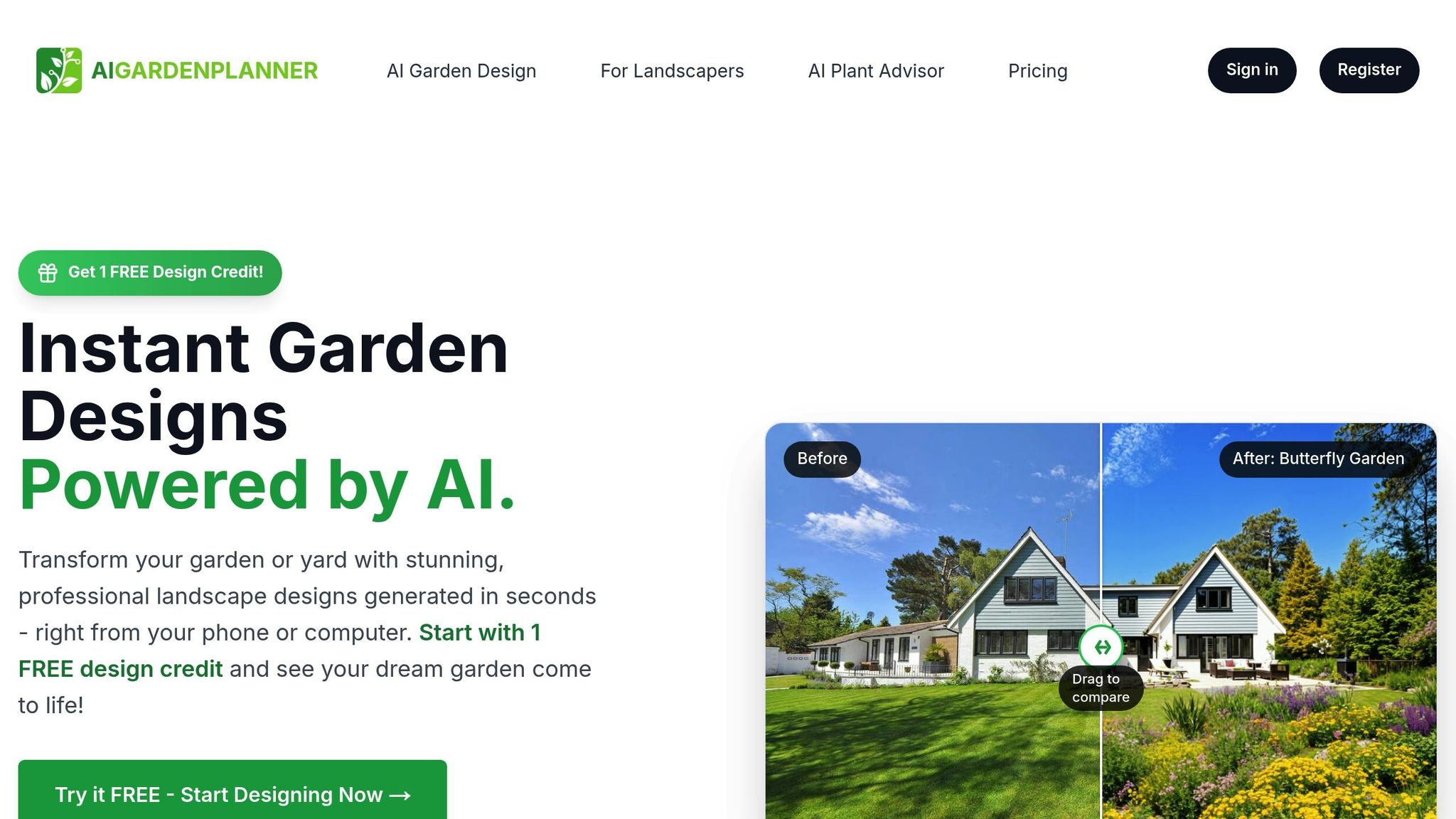
Data fusion’s potential goes beyond research labs - it can be integrated into practical tools like garden management platforms. Platforms such as AIGardenPlanner are uniquely positioned to bring these advancements to everyday gardeners.
For instance, the platform’s existing AI Plant Advisor, which provides tailored plant recommendations based on location and climate, could be enhanced with data fusion. By analyzing garden photos alongside weather data, soil conditions, and seasonal trends, the system could identify plants at risk for diseases before symptoms even appear.
Preventive design features could also play a role. The platform could use historical disease data and environmental factors to suggest optimal plant spacing, companion planting setups, or microclimate adjustments, helping gardeners avoid potential problems from the start.
Seasonal monitoring alerts could further enhance the platform’s offerings. By combining local weather forecasts with disease patterns, gardeners could receive timely notifications. For example, an alert might suggest extra monitoring during periods of high humidity to catch early signs of diseases like early blight.
Professional landscapers could benefit too. AIGardenPlanner’s tools could be expanded to include plant health monitoring, enabling landscapers to offer ongoing services and create new revenue streams. Community data sharing, where users contribute garden photos and observations, could help build localized disease databases, improving prediction accuracy across different regions and growing conditions.
These advancements highlight how data fusion can move from theory to practice, empowering gardeners and professionals alike with smarter, more proactive tools for plant health management.
Conclusion
Data fusion is reshaping the way we detect plant diseases, moving well beyond the limits of traditional single-sensor methods. By merging spectral imaging with environmental data and leveraging advanced AI techniques, researchers have achieved notable progress in both accuracy and early detection.
AI's ability to process complex relationships between visual cues and environmental factors is a game-changer. These systems can pinpoint subtle patterns that human eyes might overlook, especially during the critical early stages when treatment is most effective. This capability makes data fusion a practical tool for scalable, real-world applications.
What makes this technology even more appealing is its adaptability to real-world challenges like varying lighting, weather, and crop conditions. It tackles the real issues faced by gardeners and farmers, from spotting diseases before visible symptoms emerge to offering actionable insights based on specific environmental conditions.
With sensor costs dropping and smartphone integration becoming more common, these advanced methods are no longer out of reach for home gardeners or small-scale farmers. Edge computing further enhances accessibility by enabling local AI processing, which not only cuts costs but also delivers real-time alerts.
Take platforms like AIGardenPlanner, for example. By incorporating data fusion, such tools could transform garden management. Imagine receiving not just design recommendations for your garden, but also tailored disease prevention strategies based on your location and growing conditions. This kind of integration could make plant health monitoring both smarter and more accessible.
The combination of spectral and environmental data, as discussed earlier, lays the foundation for a highly reliable disease detection system. As these technologies evolve and become easier to access, they have the potential to revolutionize plant disease management, offering advanced monitoring tools to gardeners and farmers alike.
FAQs
How does combining spectral and environmental data improve plant disease detection accuracy?
By blending spectral data - such as light reflections from plant surfaces - with environmental data like temperature, humidity, and soil conditions, data fusion offers a deeper understanding of plant health. This combination helps detect diseases earlier and with greater precision, minimizing errors like false positives or negatives.
Studies reveal that data fusion techniques can achieve detection accuracies exceeding 98%, surpassing the 94% to 97% range of traditional methods. This advanced approach empowers growers to spot problems sooner and take decisive action to safeguard their crops.
What are the main challenges of using deep learning and transfer learning for detecting plant diseases?
🎨 Visualize Your Dream Garden Today!
Transform any outdoor space into a professional landscape design in minutes. Just upload a photo, choose your style, and let our AI do the rest.
Start your garden transformation now →Challenges in Using Deep Learning and Transfer Learning for Plant Disease Detection
When it comes to applying deep learning and transfer learning in plant disease detection, there are a few key hurdles that researchers and practitioners face. A major challenge lies in the quality and variety of datasets. Without diverse and well-curated data, the models often struggle to classify diseases accurately. Another issue is the limited availability of training data, which, combined with the unpredictable nature of real-world conditions, makes it harder for these models to perform consistently.
On top of this, achieving good results often depends on effective weight initialization and careful fine-tuning of the models. These steps are crucial for improving how quickly the model learns and how accurately it performs. However, deploying these models in real-world settings adds another layer of complexity. Factors like fluctuating light levels, changes in temperature, and varying humidity can significantly impact the model's reliability.
All of this underscores the importance of building robust datasets and creating models that can handle diverse environmental conditions to ensure dependable disease detection.
How can data fusion technology help small-scale farmers and home gardeners monitor plant health more effectively?
Data fusion technology brings together information from various sources, like spectral imaging and environmental conditions, to deliver early and precise detection of plant diseases. This empowers small-scale farmers and home gardeners to act quickly, cutting down on crop losses, using fewer pesticides, and promoting healthier plants overall.
By combining multiple data inputs, this technology provides dependable diagnoses and encourages more sustainable farming and gardening methods. It helps make the most of available resources, leading to stronger plants and better harvests - even for those with limited space or experience.
Related posts
Related Articles
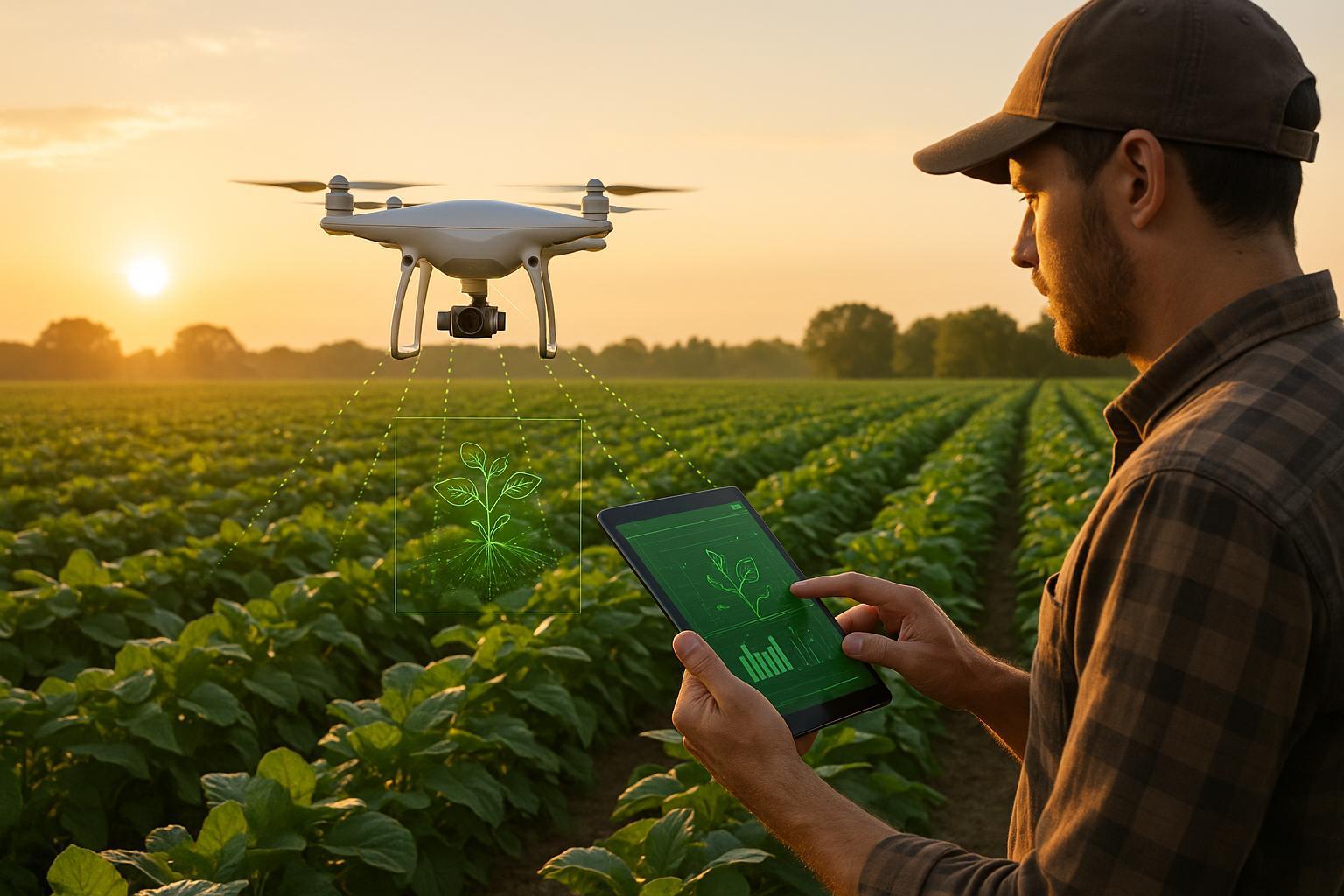
AI in Integrated Pest Management Systems
AI is revolutionizing pest management by enhancing detection, resource efficiency, and sustainability in agriculture, while addressing challenges of traditional methods.
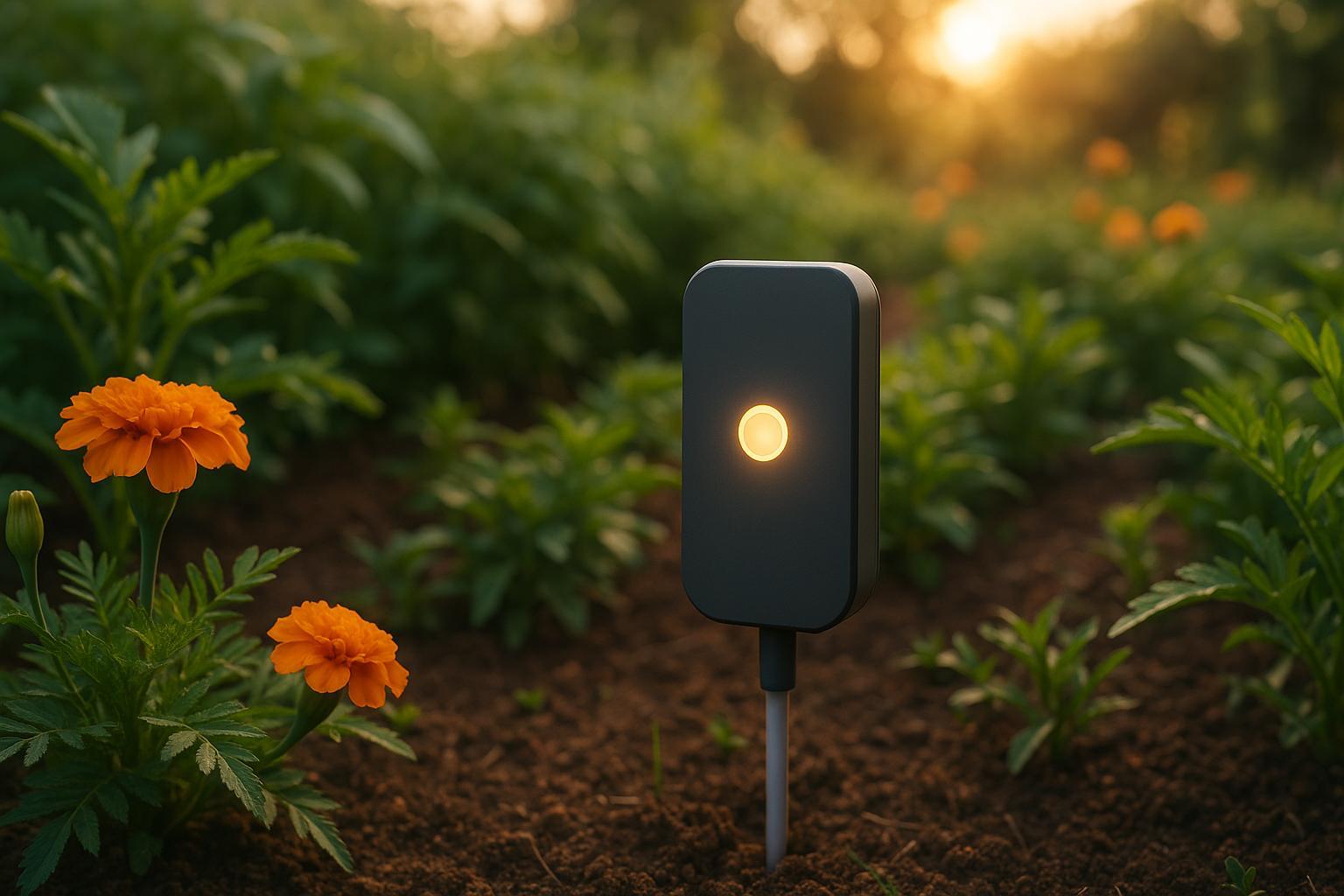
Checklist for Setting Up IoT Pest Sensors
Learn how to effectively set up IoT pest sensors in your garden, from choosing the right devices to ensuring optimal performance.
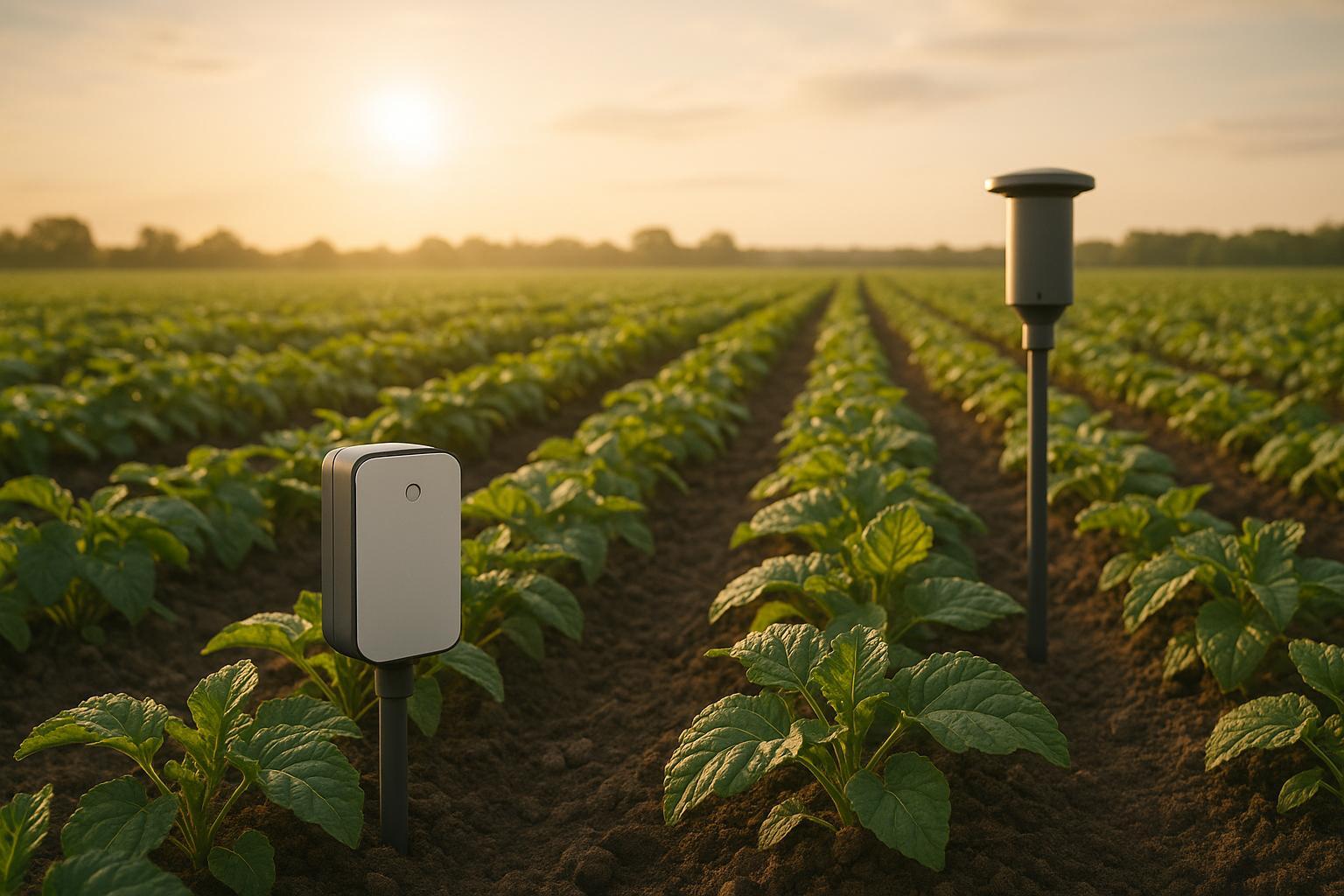
How AI Sensors Sync Data for Pest Control
Explore how AI sensors are revolutionizing pest control with real-time data syncing and precise detection for effective crop protection.

Are European Garden Spiders Poisonous? A Comprehensive Guide
Learn about the appearance, behavior, and venom of European garden spiders. Find out if they are poisonous to humans and what to do if bitten. Discover how to prevent garden spider bites and why they are beneficial to have around.
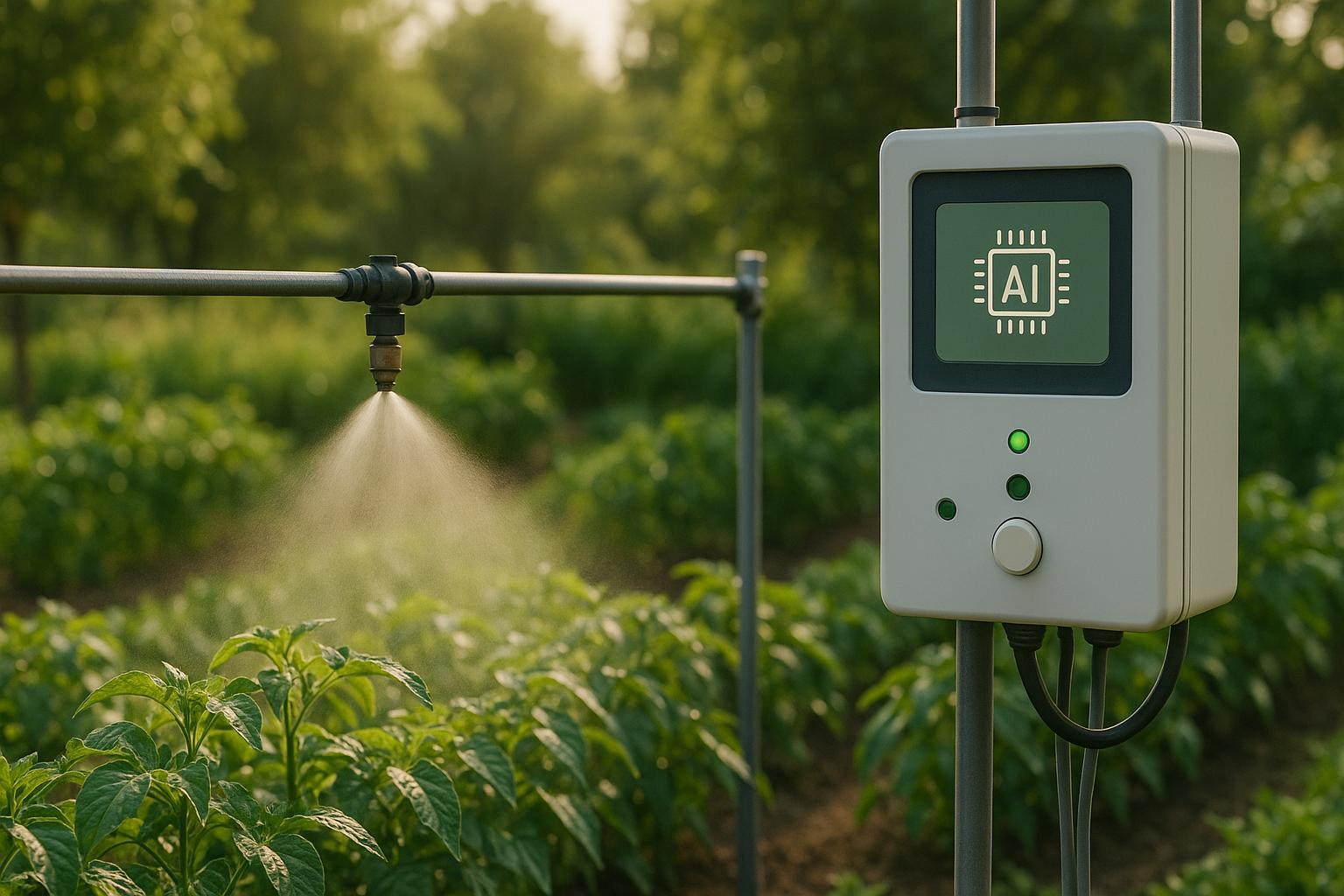
Checklist for Setting Up AI Spray Systems
Learn how to effectively set up and maintain AI spray systems for precise pest control in your garden, optimizing health and minimizing chemical use.
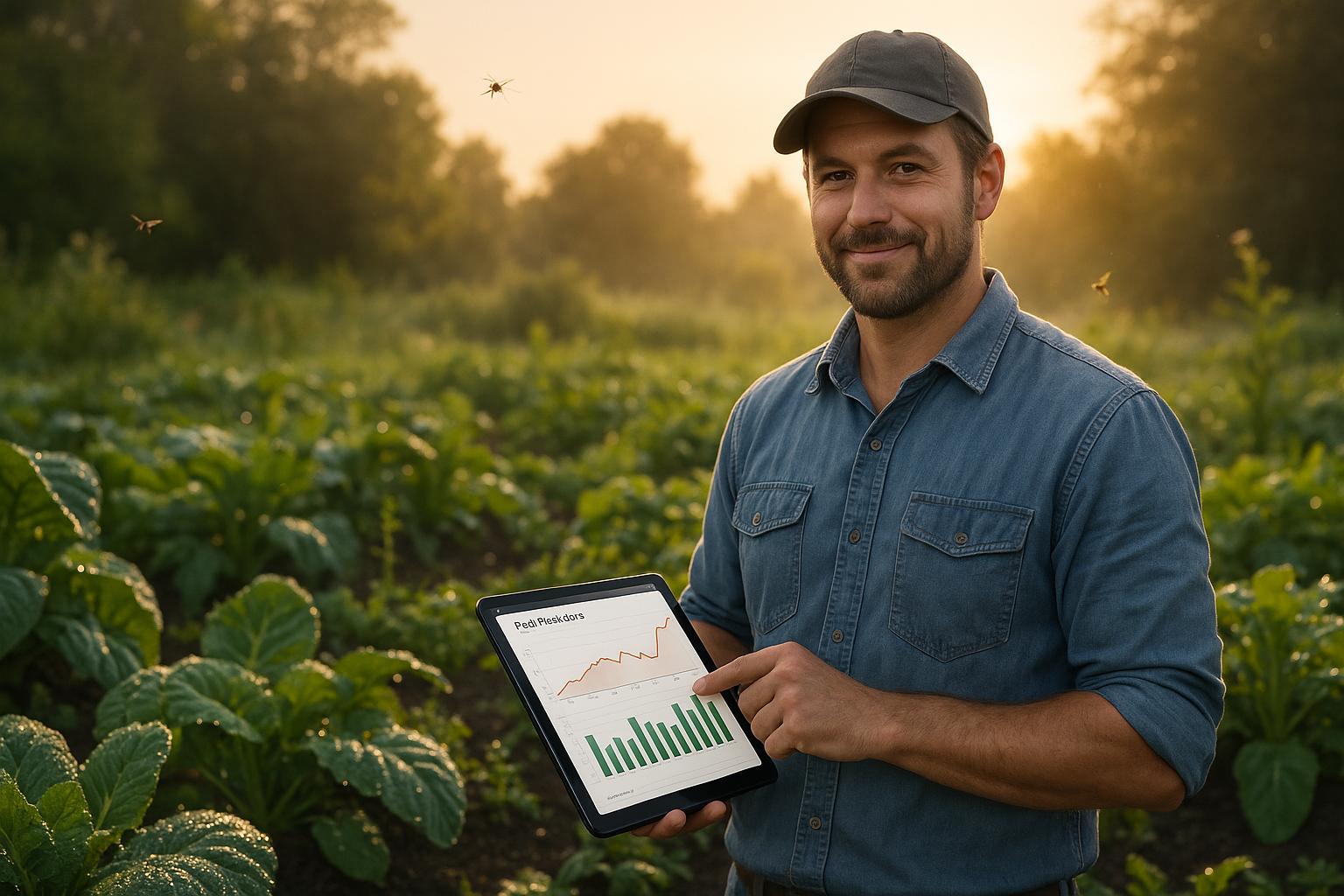
FAQs on AI Pest Prediction Models
Explore how AI pest prediction models revolutionize pest management, offering early detection, reduced pesticide use, and proactive gardening solutions.